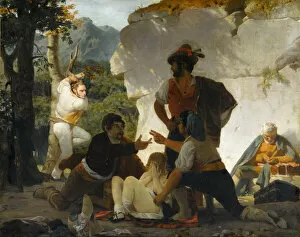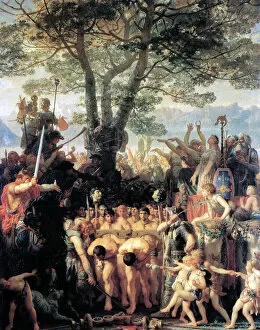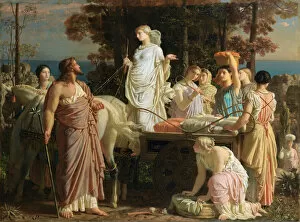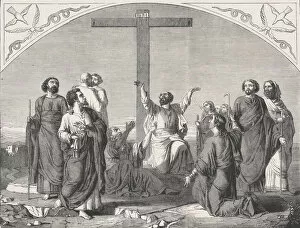Gleyre Collection
Charles Gleyre (1808-1874) was a Swiss artist known for his captivating and diverse body of work
All Professionally Made to Order for Quick Shipping
Charles Gleyre (1808-1874) was a Swiss artist known for his captivating and diverse body of work. From mythological scenes to historical events, Gleyre's paintings were filled with emotion and detail. In "La Danse des bacchantes" (The Dance of Bacchantes, 1849), Gleyre captured the wild energy and frenzy of the mythical female followers of Dionysus. The vibrant colors and dynamic composition bring this ancient ritual to life. Another notable piece is "Les Brigands romains" (The Roman Bandits, 1831), where Gleyre depicted a dramatic encounter between Roman soldiers and bandits. The tension in the scene is palpable as both sides engage in a fierce struggle. It also explored historical themes such as "The Helvetians Force the Romans to Pass Under the Yoke" (1858). This painting portrays an important moment in Swiss history when the Helvetian tribes defeated their Roman oppressors. One of his more intimate works is "Ulysses and Nausicaa" (c. 1853), which depicts a tender moment between Odysseus and Nausicaa from Homer's Odyssey. Gleyre masterfully captures their emotional connection amidst a serene landscape. Religious subjects were not foreign to Gleyre either, as seen in "The Mission of the Apostles, " published in Illustrated London News on October 30, 1865. This powerful image showcases Jesus' disciples spreading His message with determination and conviction. "The Earthly Paradise" (1869-1874) reveals another side of Gleyre's artistry—a dreamlike depiction of lush landscapes inhabited by mythical creatures. It transports viewers into an enchanting realm where imagination reigns supreme. Glimpses into Gleyre's own persona can be found through his self-portraits created at different stages of his life.















